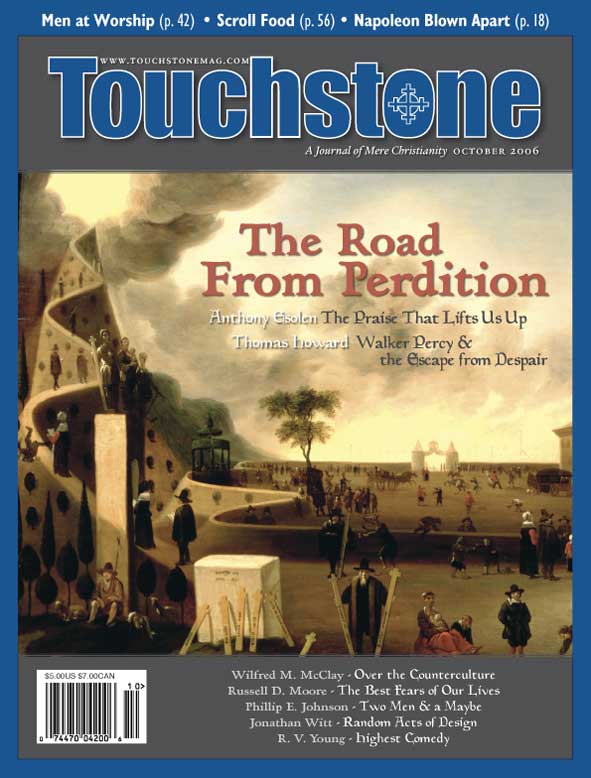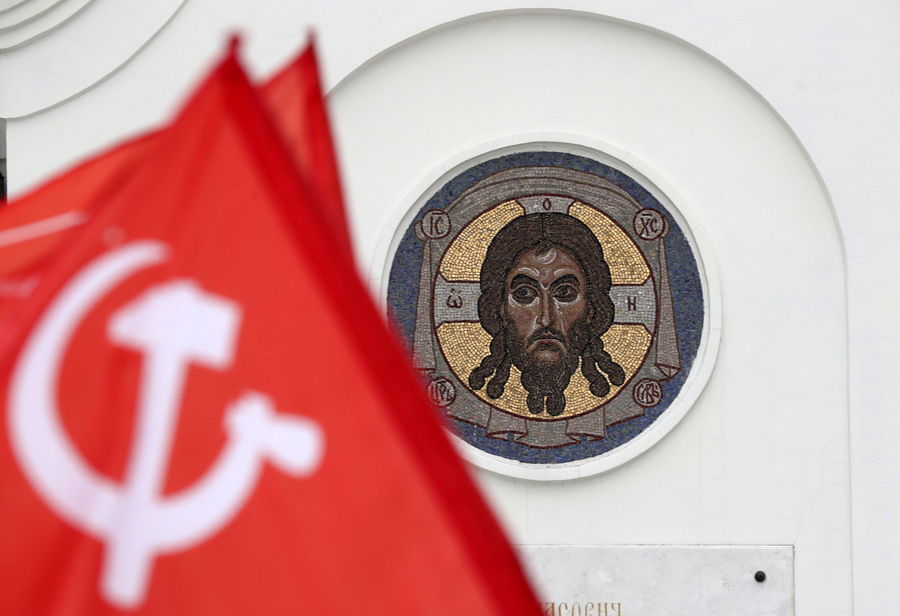Gospel Beads
The Rosary
by Garry Wills
Village Press, 2005
(185 pages, $24.95, hardcover)
reviewed by Michael P. Orsi
The rosary, says Garry Wills, “is situated within the broad gamut of religious phenomena.” The rhythmic repetition of prayers as an aid to contemplation is a technique also found in other religious traditions. The induced change of pace effected by the prayer opens the one praying it to experience a deeper consciousness in order to immerse himself in the mystery contemplated.
But for Catholics it is not just a technique, and The Rosary is not solely a scholarly dissertation, but a spiritual aid designed to help the person praying the rosary to meditate on the mysteries of the gospel.
A Rose Garden
Wills—some of whose writing could be described as questioning traditional Catholicism—begins his discussion by dispelling the myth that Mary gave the rosary to St. Dominic, the thirteenth-century founder of the Dominicans. He presents its complex history, which culminated in the prayer as we know it, compiled by a Polish Cartusian monk, Dominic of Prussia, who died in 1460. Its name, he writes, comes from rosarium, meaning rose garden.
He then examines the individual prayers contained in the rosary: the Apostles’ Creed, the Our Father, the Hail Mary, and the Glory Be (or Dox-ology). In doing this, he provides a careful and up-to-date exegesis of the Scriptures, using the analysis of Catholic and Protestant scholars such as Raymond Brown, Joachim Jeremias, and Rowan Williams, as well as insights from the writings of St. Augustine, John Henry Newman, and G. K. Chesterton.
He describes the Our Father, for example, as an apocalyptic expression that looks to the end-time of history. The words “Give us this day our daily bread” should be translated as “the oncoming bread,” referring to the messianic meal at the end of time.
Another example is found in his description of the Luminous Mystery of the Wedding Feast at Cana. Mary’s “They have no wine” is often presented as a petition moving Jesus to perform a miracle, causing pious Catholic preachers over the years to encourage those in need of aid to go to Mary first, since Jesus will not turn down his mother. The truth, however, is that she just states a fact, and advises others to do whatever Jesus says. This exegesis is consistent with her being the model disciple, as Luke presents her at the Annunciation, when she exclaims, “Let it happen as you say.”
Wills also provides a detailed guide for the rosary’s recitation. He explains which prayers correlate to the 59 rosary beads, and how they are divided into five groups of ten, or decades.
He then introduces the four sets of mysteries, each containing five specific meditations on the life of Christ: the Joyful Mysteries, which deal with the events of the nativity; the Luminous Mysteries (added by Pope John Paul II in 2002), which focus on Jesus’ public ministry; the Sorrowful Mysteries, which present the Passion; and the Glorious Mysteries, which proclaim the post-Resurrection events as they pertain to Jesus, the Holy Spirit, and Mary.
Michael P. Orsi is a Catholic priest and a Research Fellow in Law and Religion at Ave Maria School of Law.
subscription options
Order
Print/Online Subscription

Get six issues (one year) of Touchstone PLUS full online access including pdf downloads for only $39.95. That's only $3.34 per month!
Order
Online Only
Subscription

Get a one-year full-access subscription to the Touchstone online archives for only $19.95. That's only $1.66 per month!
bulk subscriptions
Order Touchstone subscriptions in bulk and save $10 per sub! Each subscription includes 6 issues of Touchstone plus full online access to touchstonemag.com—including archives, videos, and pdf downloads of recent issues for only $29.95 each! Great for churches or study groups.
Transactions will be processed on a secure server.
more from the online archives

28.3—May/June 2015
Of Bicycles, Sex, & Natural Law
Describing Human Ends & Our Limitations Is Neither Futile Nor Unloving by R. V. Young
calling all readers
Please Donate
"There are magazines worth reading but few worth saving . . . Touchstone is just such a magazine."
—Alice von Hildebrand
"Here we do not concede one square millimeter of territory to falsehood, folly, contemporary sentimentality, or fashion. We speak the truth, and let God be our judge. . . . Touchstone is the one committedly Christian conservative journal."
—Anthony Esolen, Touchstone senior editor








